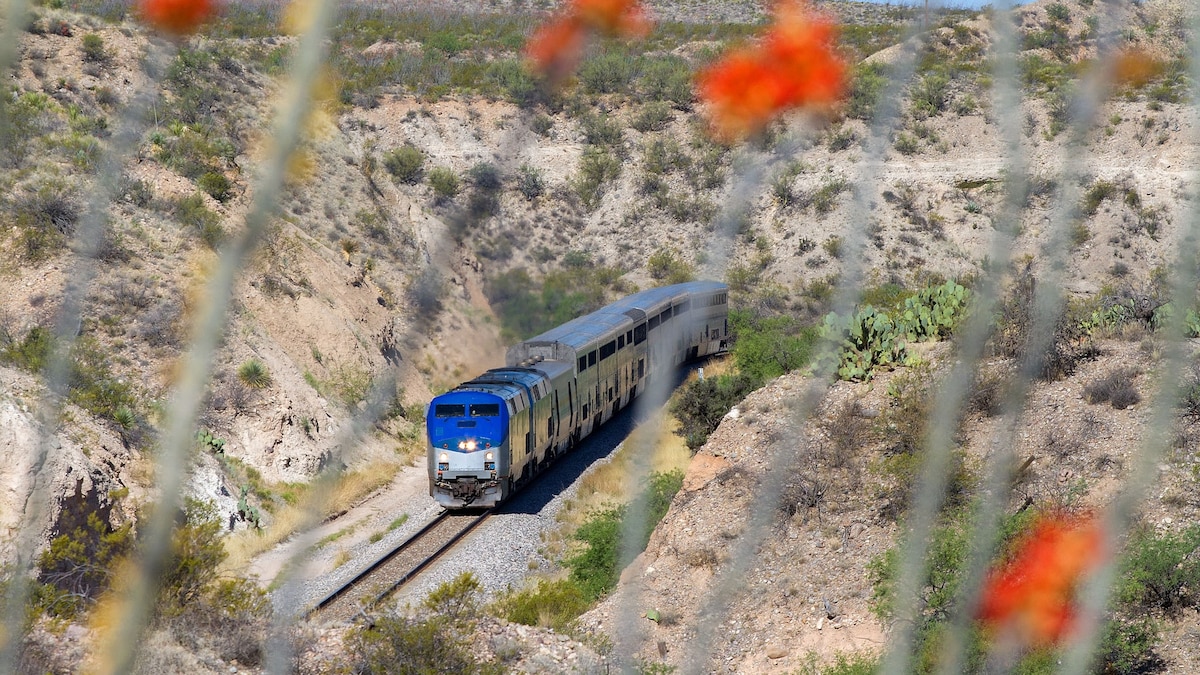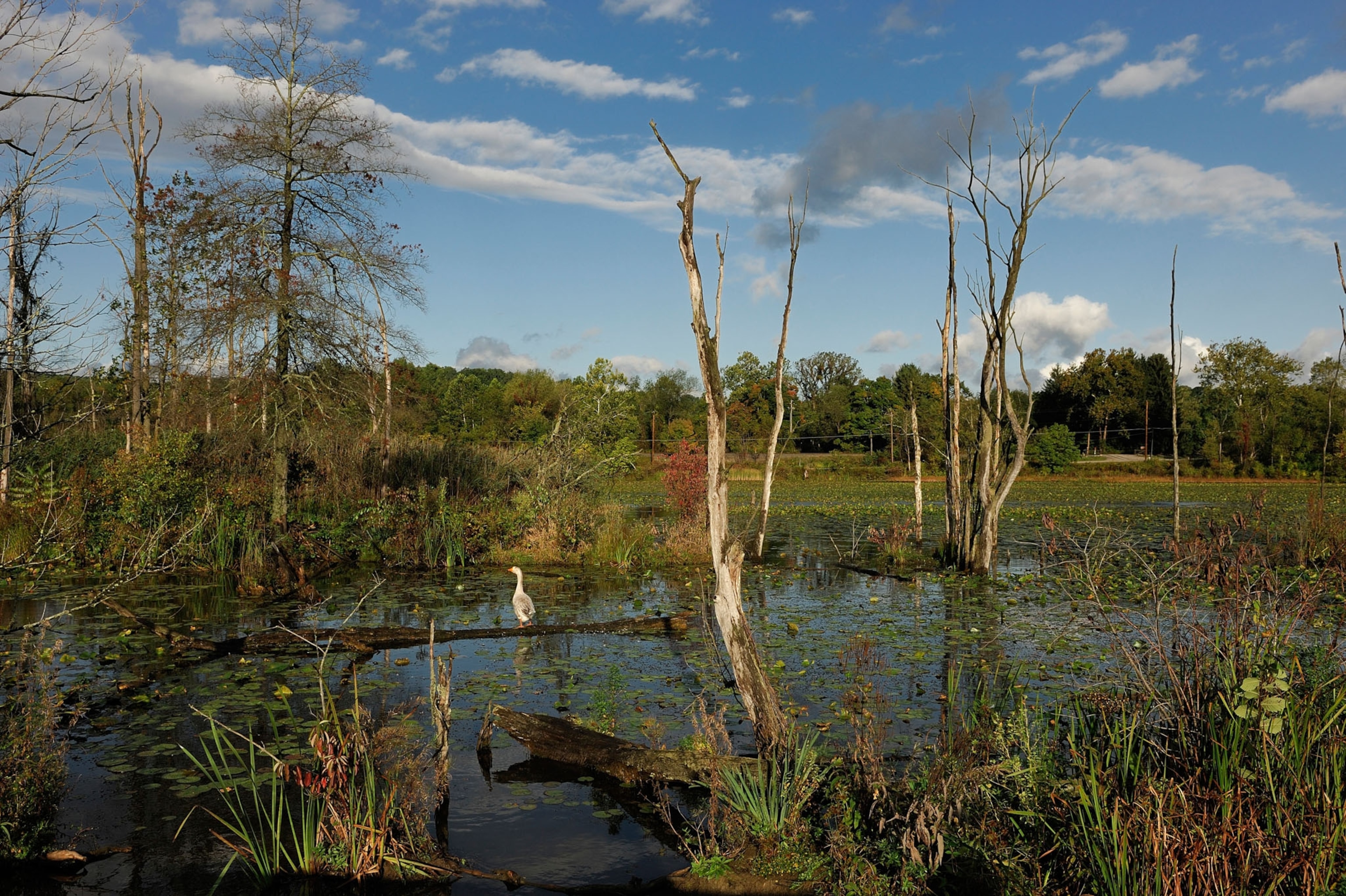Now Reading: Forget the road trip—these national parks are best visited by train
-
01
Forget the road trip—these national parks are best visited by train
Forget the road trip—these national parks are best visited by train

Driving to and through the most popular U.S. national parks can be a hassle—from parking to long lines at the entrance gates. For many parks, train travel may be the stress-free answer for parkgoers who don’t want to drive. Locomotives can move hundreds of people along a rail bed less than 5 feet wide, which can drastically reduce traffic woes. Riders can enter these parks without a coveted vehicle reservation while enjoying vistas often inaccessible by road.
Beyond logistics, there’s an enduring romance to riding the rails, and while Amtrak may not be a perfect option, riding the national train system has far more fans than many realize. In 2024, a historic 32.8 million people rode Amtrak. While many are commuters, others appreciate the ability to haul up to 125 pounds of luggage per person for free, eat meals in a dining car, sip a coffee in the observation lounge, and avoid arguing about who is driving.
“It’s the rejection of hustle culture,” says Sojourner White, train travel expert and educator, “You can relax and take a digital detox.”
Parkgoers can now slow it down and see “America’s Best Idea” with a ride on the rails to these popular parks.
(A practical guide to riding the rails in the US, from train passes to delays.)
Glacier National Park, Montana

Spring is a perfect time to see fields of wildflowers in bloom as far as the eye can see at Glacier National Park, Mont.
Photograph by Ben Horton, Nat Geo Image Collection
Encompassing the Rocky Mountains of northern Montana, Glacier National Park protects some of the nation’s most dramatic alpine terrain, including crenulated peaks, deep valleys, rare inland temperate rainforests, and the namesake glaciers. Over three million annual visitors come to the “Crown of the Continent” to travel the stunning Going-to-the-Sun Road, a less than 50-mile stretch over the Continental Divide that is only passable from late June to October. The park introduced a highly competitive vehicle reservation program in 2021, alleviating debilitating congestion while leaving several disappointed without options.
Trains have brought tourists to Glacier National Park since 1892, with the Great Northern Railway playing a significant role in the park’s designation in 1910. Today’s train riders have a loophole: via shuttle, they can enter without a vehicle reservation.
Getting there and around: The Empire Builder, Amtrak’s daily route traveling between Chicago and Seattle, makes several stops. The complimentary lodge van connects to the park’s East Side Shuttle and St. Mary Visitor Center from East Glacier Park Station. A similar shuttle system connects guests at the West Glacier Park Station to the Apgar Visitor Center. Glacier’s free shuttles take hikers and sightseers from the center along Going-to-the-Sun road, the only east-west traverse in the park. Tour companies, like Red Bus Tours and Sun Tours, will also pick up visitors.
(See America’s parks with the Indigenous peoples who first called them home.)
Grand Canyon National Park, Arizona

A mule train ascends South Kaibab Trail in Grand Canyon National Park.
Photograph by Eric Kruszewski, Nat Geo Image Collection
Grand Canyon National Park, a gaping geological time capsule, spans over 1.2 million acres and features miles of rugged trails, river rafting, and surprisingly diverse climates. Despite its vastness, most of the nearly 5 million annual visitors funnel through a single entrance on the South Rim. The park has avoided timed entry reservations, yet those stuck in two-hour waits at the gates crave another solution. The answer arrives with a fanfare of train whistles in the park’s village: the Grand Canyon Railway.
The staged robbery at the train’s start in Williams, Ariz., adds a bit of whimsy, but this traverse is no gimmick—the route has connected visitors to the canyon since 1901. Those aboard this 65-mile railway roll through high desert ravines and stands of ponderosa pines before the engine pulls up near the South Rim.
Getting there and around: Amtrak’s Southwest Chief stops at Williams on daily runs between Los Angeles and Chicago. Travelers can also make the 45-minute drive to Williams from Flagstaff, skipping the entrance lines they’d hit if they drove straight to the Grand Canyon. Once in the Grand Canyon, the park’s shuttles provide access to the trailheads and vistas along the rim’s 7-mile circuit.
(How to take amazing photos of the Grand Canyon.)
Yosemite National Park, California

This photo captures an incredible view of Starlink satellites streaking over Bridalveil Fall and Cathedral Rock in Yosemite National Park.
Photograph by Babak Tafreshi, Nat Geo Image Collection
Any route into Yosemite National Park climbs up through the Sierra Nevada foothills before reaching the landscapes that inspired Ansel Adams’ photography and conservation. Yet as the anticipation rises along with elevation, so does the traffic, with hours of waiting after the parking lots fill early on summer mornings. Cut the headaches, as Yosemite offers one of the most exceptional park shuttle services in the country, accessible via a combination of rail and bus tickets. Even though the Yosemite Area Regional Transportation System (YARTS) bus can’t avoid the wait at the gate, dedicated bus-only lanes within the park cut out the standing traffic. You will be gazing up at El Capitan or camping in Tuolumne Meadows with far less stress.
Getting there and around: Amtrak’s San Joaquins routes from San Francisco, Sacramento, or Los Angeles drop rail passengers in Merced, California. From there, catch a reserved spot on the YARTS bus line. The train ticket includes bus and park entry.
(10 places to stay while you’re at Yosemite National Park.)
New River Gorge National Park, West Virginia

Parkgoers may consider a fall train trip to witness the bursts of fall colors found along the banks of the New River Gorge in the New River Gorge National Park and Preserve, W. Va.
Photograph by Daniel Wilson, Alamy
Designated in 2020, West Virginia’s national park is one of the nation’s newest additions. Yet, just 300 miles from Washington D.C., New River Gorge National Park has seen a surge of visitors at a rate even higher than the park system’s. With hiking, rock climbing, and river rafting opportunities ranging from mild to wild, the New River Gorge is known for a jolt of approachable yet adrenaline-fueled adventure in the eastern United States. The park’s ties to the railway run deep; still-active stations like Thurmond were booming communities during the area’s coal mining days.
Today, Amtrak riders get a view no one else does. “There is no road that goes all the way through the gorge,” says Eve West, the park’s Chief of Interpretation and Education. “You’ll get a great view of the New River Gorge Bridge and feel what it was like to live down in these smaller villages that are still visible from the train.”
Getting there and around: Amtrak’s Cardinal runs between Washington D.C. and Chicago three times a week. Stops in the park include the small towns of Thurmond, Hinton, and Prince. Local whitewater outfitters run previously scheduled shuttle pickups.
(The essential guide to visiting West Virginia.)
Cuyahoga Valley National Park, Ohio

Goose Beaver Marsh is one of Cuyahoga Valley National Park’s most popular destinations for birdwatching and spotting wildlife like turtles, beavers, and northern cardinals.
Photograph by Prisma/Heeb Christian, Alamy
While Cuyahoga Valley National Park may not be as recognizable as some of its older park peers, this greenway sandwiched between Cleveland and Akron, Ohio, is quietly becoming one of the most popular in the country. It’s a day-trippers’ delight with waterfalls shielded by dense forests, pock-marked sandstone outcrops, and placid wetlands that feel hours away from the adjacent metropolis.
The Ohio and Erie Canal Towpath Trail is the park’s backbone along the Cuyahoga River. No longer a transportation system for goods, hikers, and bikers enjoy the juxtaposition of historic river locks and industrial mill remnants within the revitalized forest. The Cuyahoga Valley Scenic Railroad (CVSR) transports riders in vintage railcars from the 1940s to the 1960s along the path, allowing recreationists to take a scenic ride on the non-profit railway to their trailheads.
Getting there and around: Amtrak’s Floridian stops daily in Cleveland on the route between Miami and Chicago. Once in Cleveland, the CVSR has eight stations through the park and allows bikes.
(It was a toxic wasteland. Now it’s a national park.)
Denali National Park, Alaska

Caribou graze amongst the fall foliage on a ridge in Denali National Park, Ala.
Photograph by Barrett Hedges, Nat Geo Image Collection
The state-run Alaska Railroad connects Anchorage to North America’s highest peak, Denali National Park, in less than a day’s ride from Anchorage. Domed observation cars leave no angle ignored as the train hurtles through the protected wilderness towards Fairbanks, Alaska.
Denali restricts vehicles from the park’s 90-mile single road year-round, protecting the subarctic wilderness. The park’s shuttles are the most reliable way to journey into the backcountry, stopping for a hike or offering a chance to see the often-hidden mountain. For those who prefer to take their chances spotting Denali by air, the train stops in Talkeetna, where small planes offer quick tours, weather permitting.
Getting there and around: The Alaska Railroad runs most routes, including the Denali Star, daily from May through September. For a bonus park, travel south from Anchorage on the Coastal Classic to the port of Seward. From there, catch the wildlife-spotting day cruise to Kenai Fjords National Park, one of the continent’s largest ice fields.
(Go with Nat Geo: Alaska: Denali to Kenai Fjords Expedition.)
Rebecca Toy is a Kansas City-based writer who covers travel, history, and culture. Find her on Instagram.























